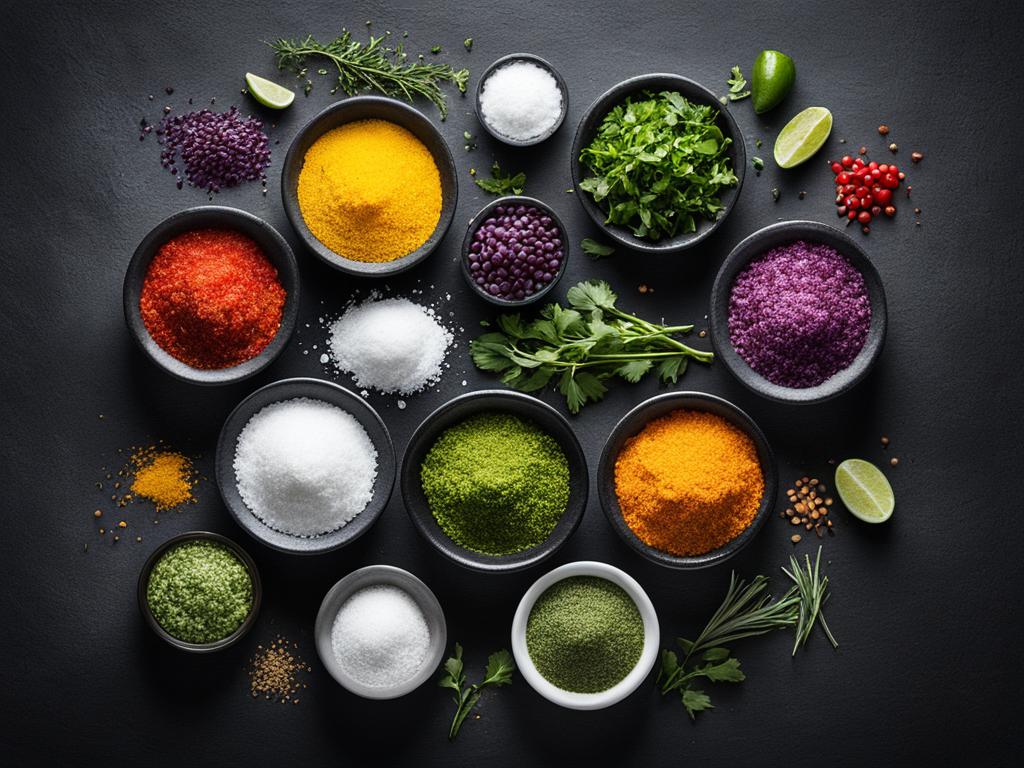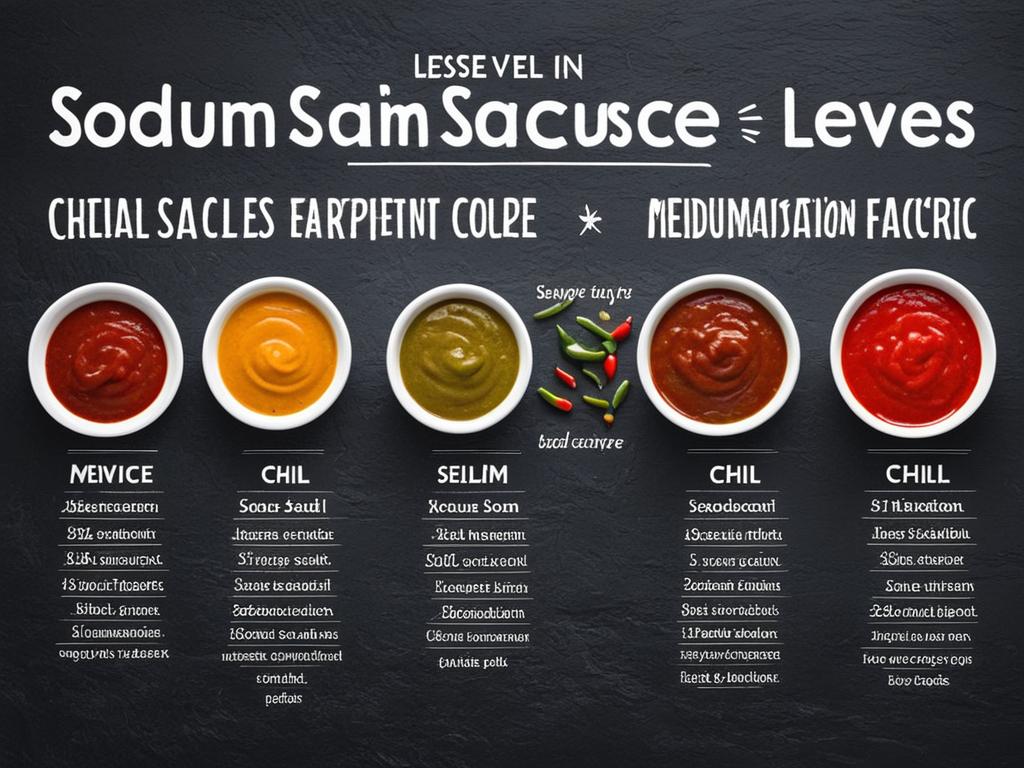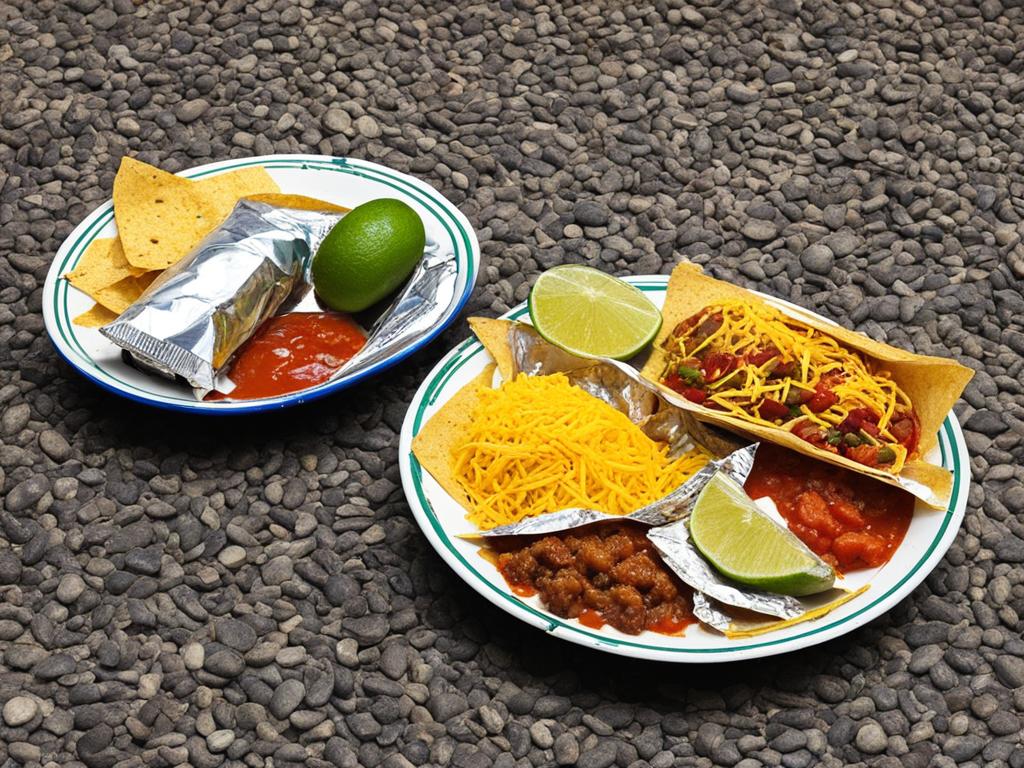Is Mexican food healthy : Mexican cuisine is renowned for its bold flavors, vibrant spices, and diverse culinary traditions. Many people wonder if Mexican food can be part of a healthy diet. The good news is that Mexican cuisine offers plenty of nutritious options that can contribute to a balanced and wholesome eating plan.
Traditional Mexican dishes are often packed with fresh ingredients, such as avocados, tomatoes, beans, and a variety of vegetables, which provide essential vitamins, minerals, and antioxidants. These ingredients are not only delicious but also offer numerous health benefits.
Let’s uncover the truth about Mexican food and explore the ways in which it can support your overall well-being and weight management goals.
Key Takeaways:
- Mexican cuisine offers a wide range of healthy ingredients that provide essential nutrients for your body.
- Choosing fresh and unprocessed ingredients is key to enjoying a nutritious Mexican meal.
- Mexican food can be part of a balanced diet when portion sizes and sodium levels are carefully considered.
- Exploring traditional Mexican recipes and authentic restaurants can lead to healthier food choices.
- With mindful choices and an understanding of the ingredients, Mexican food can be a flavorful addition to a healthy eating lifestyle.
The Impact of High Sodium Intake on Health
Excessive sodium intake can have detrimental effects on your health. It can lead to high blood pressure, heart disease, and stroke. Mexican cuisine often incorporates ingredients like salt, cheese, and processed meats, which can contribute to higher sodium levels in certain dishes.
Understanding Sodium Levels in Mexican Food
When it comes to Mexican cuisine, there is a common misconception that all dishes are high in sodium. However, the sodium content can vary depending on the ingredients used. Let’s take a closer look at some key components of Mexican food and their sodium levels.
Tortillas
Tortillas, which are a staple in Mexican cuisine, can have varying levels of sodium. Traditionally made corn tortillas tend to have lower sodium content compared to flour tortillas. It’s worth noting that packaged or store-bought tortillas may contain higher sodium levels due to added preservatives. If you’re looking to reduce your sodium intake, opting for homemade corn tortillas or tortillas with reduced-sodium options can be a healthier choice.
Salsa
Salsa is another essential element in Mexican cuisine, adding a burst of flavor to many dishes. However, store-bought salsas often contain higher sodium levels due to added salt and preservatives. If you’re concerned about sodium content, making your own salsa using fresh ingredients allows you to control the amount of salt and choose healthier alternatives. Incorporating ingredients like fresh tomatoes, onions, cilantro, and lime juice can create a flavorful and low-sodium salsa.
Cheese
Cheese plays a significant role in Mexican dishes, providing a creamy and savory element. However, certain types of cheese tend to have lower sodium levels than others. Queso fresco and cotija, for example, are generally lower in sodium compared to processed cheeses like cheddar or Monterey Jack. When using cheese in your Mexican recipes, opting for these varieties can help reduce your overall sodium intake.
High-Sodium Mexican Dishes
While not all Mexican dishes are high in sodium, there are some popular options to be aware of. Nachos, enchiladas, and tacos al pastor often contain higher sodium levels due to the combination of ingredients used, including processed meats, sauces, and high-sodium toppings. It’s important to enjoy these dishes in moderation or explore alternatives that are lower in sodium to maintain a balanced diet.
By understanding the sodium content in different Mexican food components, you can make informed choices to manage your sodium intake without compromising on taste or your love for Mexican cuisine.
| Mexican Dish | Sodium Content (mg) |
|---|---|
| Nachos | 600 |
| Enchiladas | 800 |
| Tacos al Pastor | 700 |
Tips for Reducing Sodium Intake in Mexican Cuisine
Reducing sodium intake is important for maintaining a balanced and healthy diet. In Mexican cuisine, where certain dishes can be high in sodium, it’s crucial to make mindful choices to limit your salt consumption. Here are some tips to help you lower sodium levels:
- Choose fresh ingredients: Opt for fresh vegetables, fruits, and lean proteins when preparing Mexican dishes. Fresh ingredients are naturally low in sodium and provide essential nutrients.
- Control portions: Be mindful of portion sizes to avoid consuming excessive amounts of sodium. Use smaller plates or bowls to help manage portion control.
- Limit salt usage: Instead of relying on salt for flavor, experiment with herbs, spices, and citrus juices to enhance the taste of your Mexican dishes.
- Grill or steam instead of frying: When cooking Mexican cuisine, favor grilling or steaming methods over frying. This reduces the need for added salt or high-sodium seasonings.
Awareness of the high-sodium toppings or sauces commonly used in Mexican dishes is also essential. These additions can significantly increase the sodium content of your meals. Let’s take a look at a table that shows the sodium levels in popular Mexican toppings:
| Topping | Sodium Content (per serving) |
|---|---|
| Salsa | 250mg |
| Guacamole | 200mg |
| Sour Cream | 120mg |
| Cheese | 250mg |
By being mindful of the sodium content in these toppings and using them in moderation, you can still enjoy the flavors of Mexican cuisine without consuming excessive amounts of salt.
To further illustrate the importance of reducing sodium intake, here’s a quote from renowned nutritionist Dr. Maria Martinez:
“Controlling sodium intake is crucial for maintaining a healthy diet. When it comes to Mexican cuisine, opting for fresh ingredients, controlling portions, and limiting salt usage can significantly reduce sodium levels and contribute to overall well-being.”
Remember, making simple changes in your cooking habits and ingredient choices can lead to a reduction in sodium intake, promoting a healthier lifestyle. Now, let’s continue exploring the sodium content in specific Mexican dishes in the next section.
Sodium Content in Specific Mexican Dishes
When it comes to enjoying Mexican cuisine, it’s essential to be mindful of the sodium levels in certain dishes. Loaded nachos, tacos with processed meats, and store-bought guacamole are examples of popular Mexican foods that can be higher in sodium.
Loaded nachos, often topped with cheese, sour cream, and salsa, can quickly become a sodium-packed indulgence. Processed meats like seasoned beef or chorizo that are commonly used in tacos can also contribute to higher sodium levels. Additionally, store-bought guacamole may contain added preservatives and salt, increasing its sodium content.
To make healthier choices when ordering or cooking Mexican dishes, it’s important to be aware of the sodium content. Opting for homemade guacamole with fresh ingredients and controlling the amount of added salt can help reduce sodium levels. Choosing tacos with lean meats or vegetarian fillings, and moderating the portion size of loaded nachos can also make a difference in managing sodium intake.
Here’s a table highlighting the approximate sodium content in common Mexican dishes:
| Dish | Sodium Content (mg) |
|---|---|
| Loaded Nachos | 900-1400 |
| Beef Tacos | 400-600 |
| Chicken Tacos | 300-500 |
| Vegetable Tacos | 200-400 |
| Store-Bought Guacamole | 200-300 |

Making informed choices about the sodium content in specific Mexican dishes allows you to enjoy the flavors while maintaining a balanced diet. By selecting healthier options and controlling portion sizes, you can continue to savor the deliciousness of Mexican cuisine without compromising your sodium intake.
Insights from a Professional Mexican Cuisine Chef
We reached out to Chef Maria, a renowned Mexican cuisine expert, to get her insights on creating flavorful dishes with reduced sodium content. As a seasoned chef with years of experience, she understands the importance of reducing sodium in Mexican dishes without compromising on taste.
Tips for Reducing Sodium in Mexican Dishes
Chef Maria shares some valuable tips for creating delicious, low-sodium Mexican meals:
- Use fresh ingredients: Fresh vegetables, herbs, and spices are packed with flavors that can enhance your dishes without relying on excessive salt. Experiment with a variety of vibrant ingredients to add depth and complexity to your meals.
- Enhance natural flavors: Instead of relying solely on salt, Chef Maria suggests exploring different herbs and spices to boost the natural flavors of your dishes. Cumin, oregano, cilantro, and chili peppers are just a few examples of spices that can add a delightful kick to your Mexican recipes.
- Explore low-sodium alternatives: There are many low-sodium alternatives available for common high-sodium ingredients in Mexican cuisine. For instance, you can replace regular table salt with salt substitutes or use low-sodium versions of sauces and condiments.
- Be mindful of portions: Controlling portion sizes is another effective way to reduce sodium intake. By practicing portion control, you can enjoy flavorful Mexican dishes without consuming excessive amounts of sodium.
Chef Maria’s Advice on Flavorful Dishes with Less Sodium
“Reducing sodium in Mexican dishes doesn’t mean compromising on taste. By using fresh ingredients, experimenting with spices, and being mindful of portion sizes, you can create flavorful and healthier meals that everyone will enjoy.”
By following Chef Maria’s expert advice, you can prepare delicious Mexican dishes with reduced sodium content. Remember, embracing these tips will not only make your meals healthier but also highlight the authentic flavors and diversity of Mexican cuisine.

Sodium Content in Mexican Sauces and Condiments
When it comes to Mexican cuisine, sauces and condiments play a crucial role in enhancing flavors and adding a spicy kick. However, it’s essential to be mindful of the sodium levels in these flavorful accompaniments. Mexican sauces like salsa, mole, and adobo can vary in their sodium content, depending on the ingredients and preparation methods used.
The Sodium Levels in Store-Bought Sauces
Store-bought versions of Mexican sauces often contain added preservatives, which can contribute to higher sodium levels. These convenience products provide a quick and easy solution but may not be the healthiest choice for those looking to lower their sodium intake. It’s always recommended to check the nutrition labels of store-bought sauces to make informed choices.
“Store-bought sauces can be convenient, but they can pack a sodium punch. It’s best to consume them in moderation and explore healthier alternatives,” advises Chef Maria, a renowned Mexican cuisine expert.
Healthier Alternatives and Homemade Recipes
If you’re passionate about Mexican cuisine and want to enjoy delicious sauces with lower sodium levels, there are several healthier alternatives and homemade recipes you can try:
- Homemade Salsa: Making your own salsa allows you to control the ingredients and customize the flavors to your preference. Opting for fresh tomatoes, onions, cilantro, and lime juice can add a burst of freshness without the excessive sodium.
- Lighter Mole Sauce: Mole sauce is a beloved staple in Mexican cooking, but it can sometimes be high in sodium due to the use of various spices and chocolate. Look for lighter versions of mole sauce recipes that use unsweetened cocoa powder and reduce the amount of added salt.
- Low-Sodium Adobo: Adobo is a versatile seasoning used in many Mexican dishes. To reduce the sodium content, prepare your own adobo blend using garlic powder, onion powder, paprika, cumin, and other spices, while limiting the amount of salt added.
By opting for homemade sauces and healthier alternatives, you can still enjoy the flavors of Mexican cuisine while keeping your sodium levels in check. Plus, experimenting with your own recipes allows you to personalize the taste and spice level to suit your preferences.

With a little creativity and attention to ingredients, you can savor the authentic flavors of Mexican sauces without compromising on your health goals.
The Impact of Age at Arrival on Healthy Eating among Mexican Immigrants
The age at which immigrants arrive in the U.S. can have profound implications for their healthy eating habits. Immigrants who arrive during childhood or adolescence are often more vulnerable to adopting unhealthy American behaviors during sensitive periods of development. This can be attributed to the American food environment, which is characterized by the availability of inexpensive, unhealthy foods that are prominently marketed.
Research has shown that the age at arrival plays a crucial role in determining the dietary patterns of Mexican immigrants in the U.S. Individuals who arrive at a younger age may experience a more significant shift in their eating habits, as they have more extensive exposure to the American food environment. This exposure can make them more susceptible to adopting unhealthy dietary practices that are prevalent in the host country.
Furthermore, the American food environment poses additional challenges, as it often promotes and facilitates unhealthy eating behaviors. The prevalence of fast food establishments, processed foods, and high-calorie beverages can act as significant barriers to healthy eating among Mexican immigrants, particularly for those who are socioeconomically disadvantaged and lack access to healthier alternatives.
 “Immigrants who arrive during childhood or adolescence are more likely to adopt unhealthy American behaviors during sensitive periods of development.”
“Immigrants who arrive during childhood or adolescence are more likely to adopt unhealthy American behaviors during sensitive periods of development.”
It is essential to understand the unique vulnerabilities of Mexican immigrants and implement targeted interventions to promote healthy eating habits. By addressing the specific challenges faced by this immigrant group, such as the impact of age at arrival and the influence of the American food environment, we can empower individuals to make informed decisions regarding their dietary choices.
Duration of Residence and the Shift in Eating Patterns
As Mexican immigrants spend more time in the U.S., their eating habits may undergo a significant shift. This shift is often characterized by an increased consumption of processed foods, fast food, sugary beverages, and a decrease in the consumption of traditional, healthier Mexican dishes.
Factors such as social interactions, English language proficiency, and residence outside immigrant enclaves can contribute to this unhealthy eating assimilation. As immigrants integrate into American society, they may be exposed to new cultural norms and behaviors that promote unhealthy eating habits.
Research indicates that the duration of residence has a considerable impact on the dietary patterns of Mexican immigrants. For example, a study by Perez-Escamilla and Putnick (2012) found that Mexican immigrants’ intake of fruits and vegetables decreased significantly with longer duration of residence.
The Vulnerability of Mexican Immigrants and the Need for Supportive Policies
Mexican immigrants are a vulnerable group when it comes to healthy eating due to various socioeconomic factors and limited resources. They often face barriers such as linguistic and cultural differences, lack of access to affordable nutritious foods, and limited nutrition knowledge.
To address the unique needs of Mexican immigrants and promote healthy eating, policy initiatives should focus on increasing access to affordable and culturally appropriate healthy foods, improving nutrition education, and supporting community-based programs. These initiatives should take into account the impact of age at arrival and the duration of residence in designing interventions that effectively address the specific challenges faced by Mexican immigrants.
Achieving Healthier Eating Habits among Mexican Immigrants
While the American food environment presents numerous challenges, it is essential to provide Mexican immigrants with the resources and support they need to make healthier eating choices. This can be achieved through:
- Enhancing nutrition education programs that target Mexican immigrants and provide culturally sensitive guidance on healthy eating options.
- Improving access to affordable and nutritious foods in areas with a significant Mexican immigrant population.
- Encouraging the preservation of traditional Mexican dietary practices that are inherently healthy, such as the consumption of fresh fruits, vegetables, legumes, and whole grains.
- Collaborating with community organizations and local businesses to promote healthier options, minimize the prevalence of unhealthy foods, and create a supportive food environment.
| Age at Arrival | Duration of Residence | Key Factors |
|---|---|---|
| Childhood or adolescence | Longer duration | Increased susceptibility to adopting unhealthy American behaviors during sensitive periods of development. |
| Adulthood | Shorter duration | Less exposure to American food environment and cultural assimilation. |
Duration of Residence and Healthy Eating among Mexican Immigrants
The duration of residence in the U.S. plays a significant role in shaping the eating habits of Mexican immigrants. As immigrants spend more time in the country, their diets tend to deteriorate as they adopt unhealthy eating habits. This phenomenon, known as unhealthy assimilation, poses challenges for this vulnerable immigrant group in maintaining healthy eating patterns.
Research suggests that several factors contribute to this unhealthy assimilation. One key factor is the influence of the American food environment. The abundance of inexpensive, unhealthy food options in the U.S. makes it easier for Mexican immigrants to stray from their traditional, more nutritious diet. The American food environment offers convenience and accessibility to processed foods, fast foods, and sugary beverages, which tend to be high in calories, unhealthy fats, sodium, and added sugars.
Furthermore, social interactions play a pivotal role in shaping dietary choices. As immigrants establish connections with Americans or other ethnic groups, they may be exposed to different eating habits and adopt unhealthy practices. This can include regularly consuming fast food, processed snacks, and sugary drinks.
The duration of residence also impacts language proficiency. Limited English language skills may restrict immigrants’ access to health information and understanding of nutrition labels, making it harder for them to make informed and healthier food choices.
Key factors contributing to unhealthy assimilation:
- American food environment
- Social interactions and cultural influences
- Language barriers
To tackle this issue and support Mexican immigrants in maintaining healthy diets, targeted interventions and community-based initiatives are essential. These can include providing culturally appropriate nutrition education, promoting traditional Mexican foods that are healthier choices, and offering resources to navigate the American food environment.
“It is crucial to empower Mexican immigrants with the knowledge and tools to make healthier food choices while preserving their cultural identity and traditional dietary practices,” says Dr. Ana Rodriguez, a nutrition expert and advocate for immigrant health.

| Impact of Duration of Residence on Eating Habits | Duration of Residence | Unhealthy Eating Habits |
|---|---|---|
| Less than 5 years | 1-2 years | Minimal impact on eating habits |
| 3-5 years | Some adoption of unhealthy eating habits | |
| 5-10 years | 5-7 years | Noticeable shift towards unhealthy eating habits |
| 7-10 years | Becoming more reliant on fast food and processed snacks | |
| 10+ years | Significant assimilation into unhealthy American food habits |
As shown in the table, increased duration of residence is associated with a higher likelihood of adopting unhealthy eating habits. It is crucial to address this issue early on and provide support to Mexican immigrants throughout their transition into American society.
Conclusion
Mexican food has a lot to offer not only in terms of taste but also in terms of health benefits. When approached with knowledge and mindful choices, Mexican cuisine can be a healthy and nutritious option for your diet. By being aware of the sodium levels in certain dishes, choosing fresh ingredients, and controlling portions, you can enjoy the vibrant flavors while maintaining a balanced and nutritious lifestyle.
The benefits of Mexican cuisine are numerous. Traditional Mexican dishes often incorporate a variety of vegetables, whole grains, and lean proteins, providing essential nutrients and promoting overall health. The use of flavorful herbs and spices such as cilantro, cumin, and chili peppers adds depth and richness to the dishes, eliminating the need for excessive salt or unhealthy additives.
When dining out at Mexican restaurants, it is important to look for healthy options. Many establishments now offer lighter versions of classic dishes, such as grilled fish or chicken tacos, vegetable-packed salads, and fresh salsas. It’s also a good idea to ask for sauces, toppings, and dressings on the side, allowing you to control the amount you consume.
Incorporating Mexican cuisine into your diet can be a delicious and nutritious choice. By making informed decisions and choosing healthy Mexican dishes, you can savor the authentic flavors while maintaining a well-balanced and healthy lifestyle. So next time you’re considering what to have for dinner, why not enjoy the benefits of Mexican cuisine?
Also Read : Healthy Food For Picky Eaters: Nutritious Choices
FAQ
Q: Is Mexican food healthy?
A: Yes, Mexican food can be healthy as it includes a variety of nutritious ingredients such as beans, corn, chile, and pumpkin. However, it also depends on how it is prepared and portion sizes.
Q: What are some healthy Mexican ingredients?
A: Some healthy Mexican ingredients include beans, corn, chile, pumpkin, squash, seafood, and a variety of spices like cinnamon and jalapeños.
Q: Are corn tortillas healthy?
A: Corn tortillas can be a healthy choice as they are usually made from whole corn, which provides fiber and essential nutrients. However, it’s important to check for added fats or preservatives in store-bought tortillas.
Q: Can Mexican food be a part of a balanced diet?
A: Yes, Mexican food can be a part of a balanced diet as it offers a wide variety of options including plant-based dishes, seafood, lean poultry, and an emphasis on fresh ingredients.
Q: What are the nutritional benefits of traditional Mexican meals?
A: Traditional Mexican meals often include a mix of ingredients that offer nutritional benefits such as fiber, protein, essential vitamins and minerals, and anti-inflammatory properties from spices like chile and cinnamon.
Q: Are there any concerns about the healthiness of Mexican food?
A: Some concerns about the healthiness of Mexican food may arise from dishes high in added fats, sodium, or sugars, as well as oversized portions commonly found in certain restaurants.
Q: How can I make my Mexican meals healthier?
A: You can make your Mexican meals healthier by incorporating more vegetables, choosing lean protein sources, using whole grains, reducing added fats and sugars, and being mindful of portion sizes.
Q: Can a Mexican diet have any impact on health conditions like cancer and cholesterol?
A: Research suggests that certain components of the Mexican diet, such as beans, chile, and pumpkin, may have potential health benefits, including reducing the risk of certain cancers and improving cholesterol levels.
Q: Are there specific dietary recommendations from Mexican-American or Latina dietitians?
A: Yes, Mexican-American and Latina dietitians often recommend incorporating traditional Mexican ingredients, focusing on a plant-based approach, and emphasizing the cultural importance of certain foods in a balanced diet.
Q: What are some misconceptions about the healthiness of Mexican food?
A: Some people think that all Mexican food is high in fat and calories when in reality, many traditional Mexican dishes are balanced and nutritious, especially when prepared with fresh, whole ingredients and appropriate portion sizes.








Leave A Comment